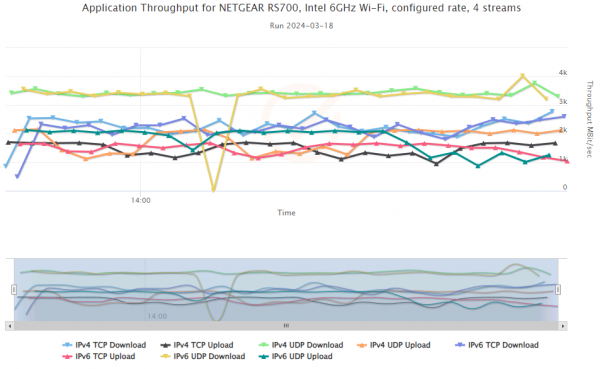Articles
Testing 10 Gigabit Ethernet on Home Routers in the Wi-Fi 7 Era
The demand for high-speed internet connections within homes and small offices has skyrocketed, driven by advanced broadband applications and the advent of Wi-Fi 6 and 7 technologies. 10 Gigabit Ethernet support in home routers is necessary.
The deployment of such high-speed connections necessitates rigorous testing to ensure optimal performance and reliability. Here are some of the most important things to test for 10 Gigabit Ethernet performance on home routers in the context of advanced Wi-Fi capabilities and modern broadband applications.
10Gig interfaces bridge the gap between wired and wireless
Wi-Fi 6 already supports speeds over 1Gbps, and Wi-Fi 7 promises speeds greater than 10Gbps with Multi-Link Operation (MLO) enabled. However, to fully leverage the potential of advanced Wi-Fi, the underlying network infrastructure, particularly the Ethernet connections that feed into Wi-Fi routers, must not become a bottleneck. Testing 10 Gigabit Ethernet capabilities on home routers ensures that the wired backbone can support the high-speed data transfer rates Wi-Fi 7 devices can achieve.
Moreover, data-intensive applications such as 4K/8K video streaming and cloud gaming require not just higher bandwidth but also reduced latency to deliver a seamless user experience. A 10 Gigabit Ethernet backbone ensures that routers can handle such demanding data flows, making it imperative to test these interfaces to guarantee they meet performance expectations rigorously.
What to test when you have 10Gig on your products
Maximum throughput
Testing for maximum throughput over a 10G link is necessary to assess a device’s ability to handle the highest data rates possible under optimal conditions. This is especially relevant for Wi-Fi 7 devices, which promise significantly higher speeds than their predecessors. Max throughput testing evaluates a device’s performance ceiling, ensuring it can support the intense bandwidth requirements of data-heavy applications like 4K/8K video streaming, online gaming, and large file transfers.

Long-term stability
While peak performance is critical, equally important is a router's ability to maintain this performance consistently over time. Long-term stability testing challenges devices by subjecting them to extended periods of stress, replicating the continuous operation they’ll experience in the field. This type of testing uncovers potential issues that may not be evident in short-term assessments, such as memory leaks, overheating, or performance degradation under sustained loads.
We discuss stability testing extensively at QA Cafe, and find it is perhaps the most important type of testing. You can learn more about building stability testing into your test process in our stability testing series.
Mixing different data rates and PHY modes
Different clients will access data at different rates over different connections. This includes both wired and wireless connections, as well as different Wi-Fi types. While the total available bandwidth of a device with advanced Wi-Fi and 10Gig Ethernet is undoubtedly significant, throughput testing under ideal, single-rate conditions won’t necessarily push a device to its limits.
Testing how devices handle mixed data rates is essential to ensure that high-speed devices are not throttled unnecessarily and that devices with lower data rates do not hinder the overall network performance. That means testing performance simultaneously over different PHY modes, Ethernet (2.5, 5, and 10G, respectively) and Wi-Fi (including legacy connectivity types like 802.11a/b/g). It also means having different performance test clients pushing data at different speeds or ramping up speed at fixed rates to find any odd behavior or edge cases (even better if you combine this testing with long term stability!)
Learning more with CDRouter
By focusing on these critical testing areas, CDRouter (powered by the NTA3000 test platform) enables manufacturers to comprehensively evaluate their devices' readiness for the next generation of networking challenges with advanced 10Gig and Wi-Fi 7 features. This rigorous testing ensures that consumers and businesses benefit from routers that deliver unparalleled speeds and capabilities, plus the long-term reliability and flexibility required to support rapidly evolving network needs.
For more, see this webinar with our resident CWNA expert Brian Dubreuil on Wi-Fi 7 testing, plus our guide to building a comprehensive test strategy for broadband CPE and Wi-Fi products.